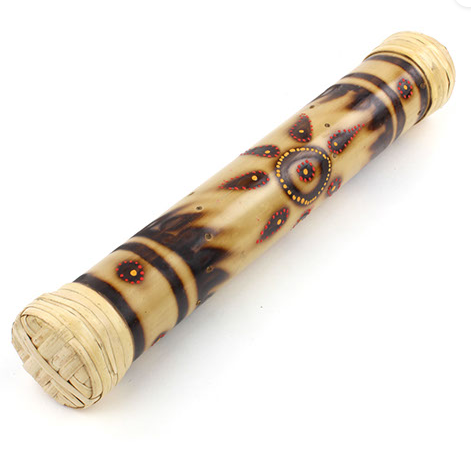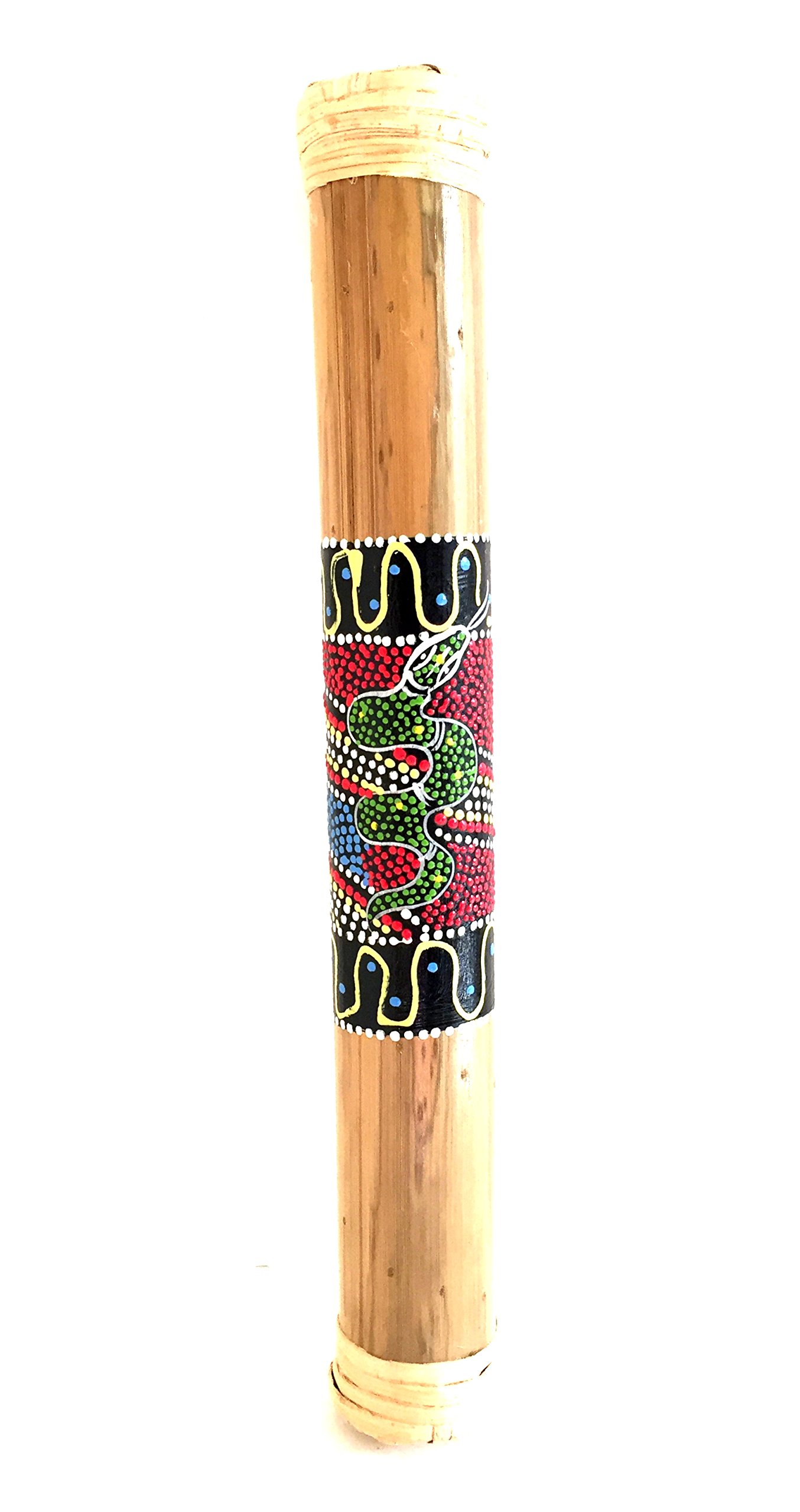Rainstick
Percussions
America
Between 1001 and 1900 AD
Video
The rainstick is a fascinating percussion instrument with deep cultural and historical roots, admired for its ability to replicate the calming sound of rainfall. Its unique design, origins, and uses make it both a musical and cultural artifact. It is believed to have first appeared in the mid-16th century. It is commonly associated with the indigenous peoples of Chile, particularly the Diaguita, who crafted these instruments from cactus tubes filled with pebbles and designed to mimic the sound of falling rain.
Characteristics of the Rainstick
Structure and Materials:
Rainsticks are typically long and tubular, varying in length from a few inches to several feet. Traditional rainsticks are made from dried cacti, where the spines are removed, inverted, and inserted into the hollow tube. Modern versions can be made from bamboo, wood, plastic, or even metal. The interior is filled with granular materials such as pebbles, seeds, beads, or small pieces of metal that create a rain-like sound.
Sound Production:
When tilted or rotated, the contents inside fall through the tube, bouncing off internal thorns, spikes, or nails, creating a sound that mimics rainfall. The length and design of the instrument affect the sound; longer rainsticks produce a slower, deeper sound, while shorter ones create a faster, lighter sound.
Decorative Design:
Traditional rainsticks are often adorned with patterns, carvings, or painted designs reflecting the culture of their origin. They may include natural finishes, colorful accents, or indigenous symbols representing water, fertility, or nature.
History and Cultural Significance
Origins:
The rainstick is believed to have originated with the Mapuche people of South America, specifically in Chile and Argentina. In Mapuche culture, it was used in rain rituals, with the sound thought to invoke rainfall during periods of drought. Similar instruments exist in other cultures. Southeast Asia: Instruments made from bamboo with similar cascading sound effects. Variations that include rattles and cascading sound-producing tools. Each culture adapts the instrument to its local materials and spiritual practices. The rainstick represents water, fertility, and life in many cultures. It was often used during ceremonial rituals, agricultural celebrations, and storytelling to mimic the sound of nature.
Modern Uses
Musical Applications:
Rainsticks are widely used in world music, ambient music, and percussion ensembles. They add a soothing, atmospheric quality to songs and are often paired with other natural-sounding instruments like drums or flutes.
Therapeutic Uses:
The gentle, calming sound of the rainstick makes it popular in sound therapy and meditation practices. It is used to promote relaxation, reduce stress, and improve focus.
Educational Tools:
Rainsticks are used in music education to teach rhythm, sound production, and cultural awareness. They are simple to play, making them ideal for children and beginners.
Decorative and Souvenir:
Many rainsticks are created as decorative items or sold as souvenirs, often reflecting the artistic traditions of their place of origin.
Construction of Traditional Rainsticks
- A hollow cactus, like Eulychnia acida, is harvested, dried, and prepared.
- The cactus spines are carefully removed, and then reinserted into the tube, pointing inward, to form an internal barrier.
- One end of the tube is sealed, the interior is filled with small items (seeds, pebbles, etc.), and the other end is sealed.
- The exterior is often polished, painted, or engraved with traditional patterns.
The rainstick is more than just an instrument; it is a cultural artifact that bridges music, history, and tradition. Its natural, calming sound and symbolic significance make it a cherished tool in diverse settings, from rituals and concerts to therapy and education. The Rainstick continues to inspire creativity and connection to nature across the globe.
FAQ
What is the rainstick made of?
The rainstick is traditionally made from hollow, dried cacti, such as Eulychnia acida, which are native to South America. The cactus spines are removed, inverted, and inserted into the hollow tube to create internal obstructions. The tube is then filled with small objects like pebbles, seeds, or shells, which produce a rain-like sound as they cascade through the instrument. Modern rainsticks can also be made from materials like bamboo, wood, or plastic, and they may use nails or metal pins instead of cactus spines.
Where are rainsticks used?
Rainsticks are used in traditional ceremonies, music, and storytelling, particularly in cultures of Central and South America, Africa, and Australia. They are often played to evoke the sound of rain, symbolizing fertility or as a call for rain during droughts. Today, rainsticks are also used in world music, meditation, and as educational tools for rhythm and sound exploration.
What is the rainstick used for?
The rainstick is primarily used to evoke the sound of rain and is often used in traditional ceremonies, music, and storytelling. It is a symbol of fertility and a call for rain during droughts. In modern times, it is also used in world music, meditation, and as an educational tool for rhythm and sound exploration.
Other Instrument
Categories




















